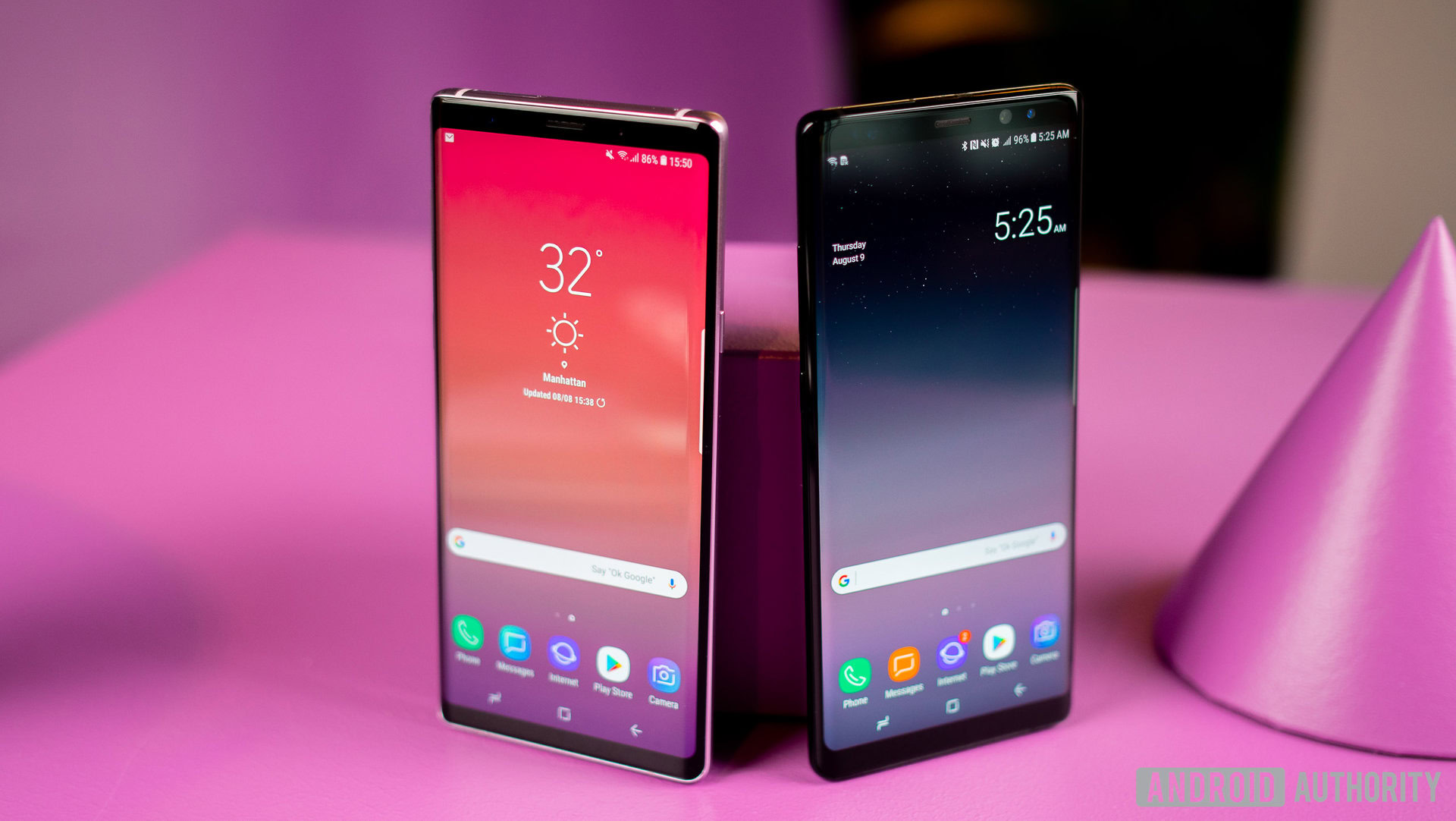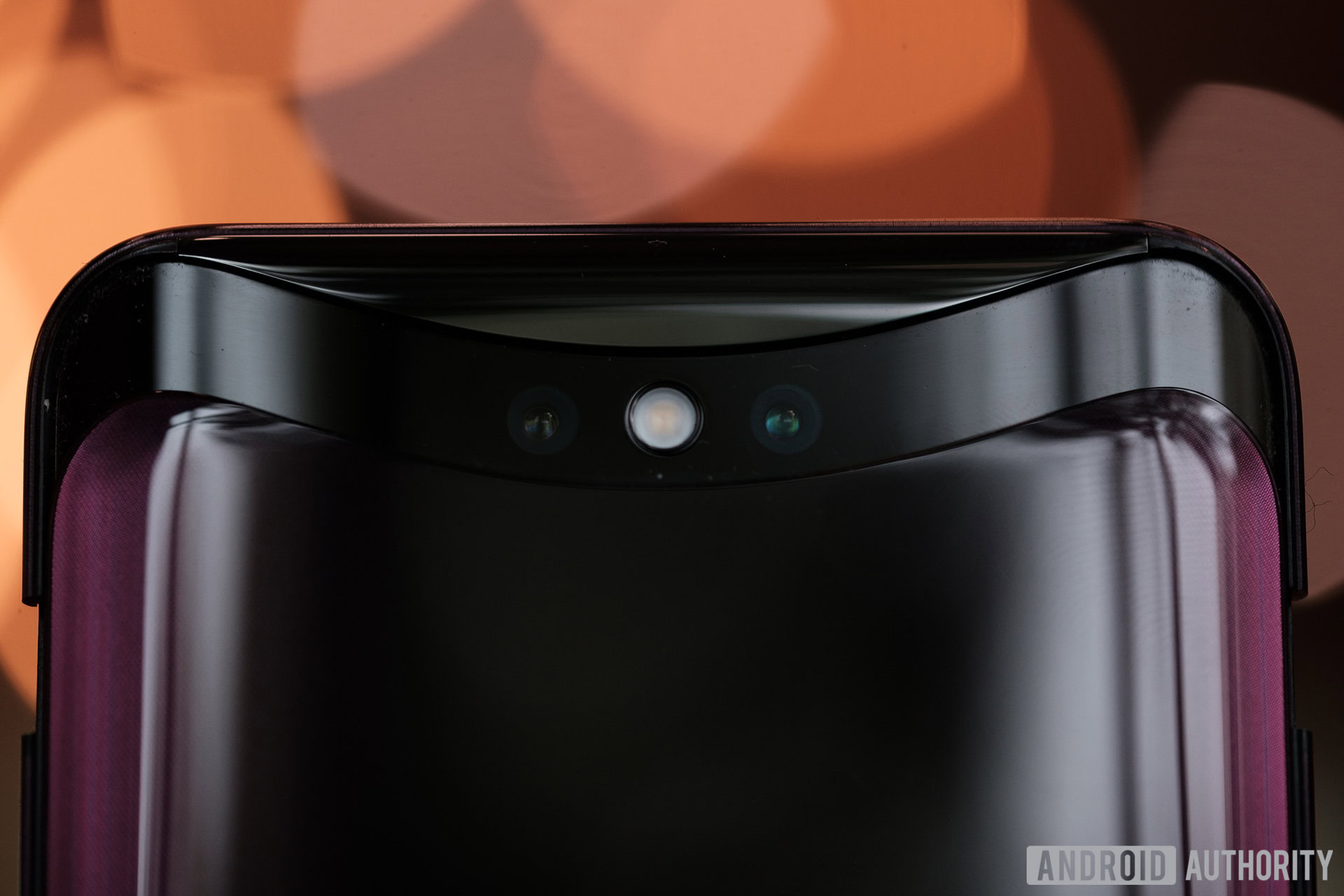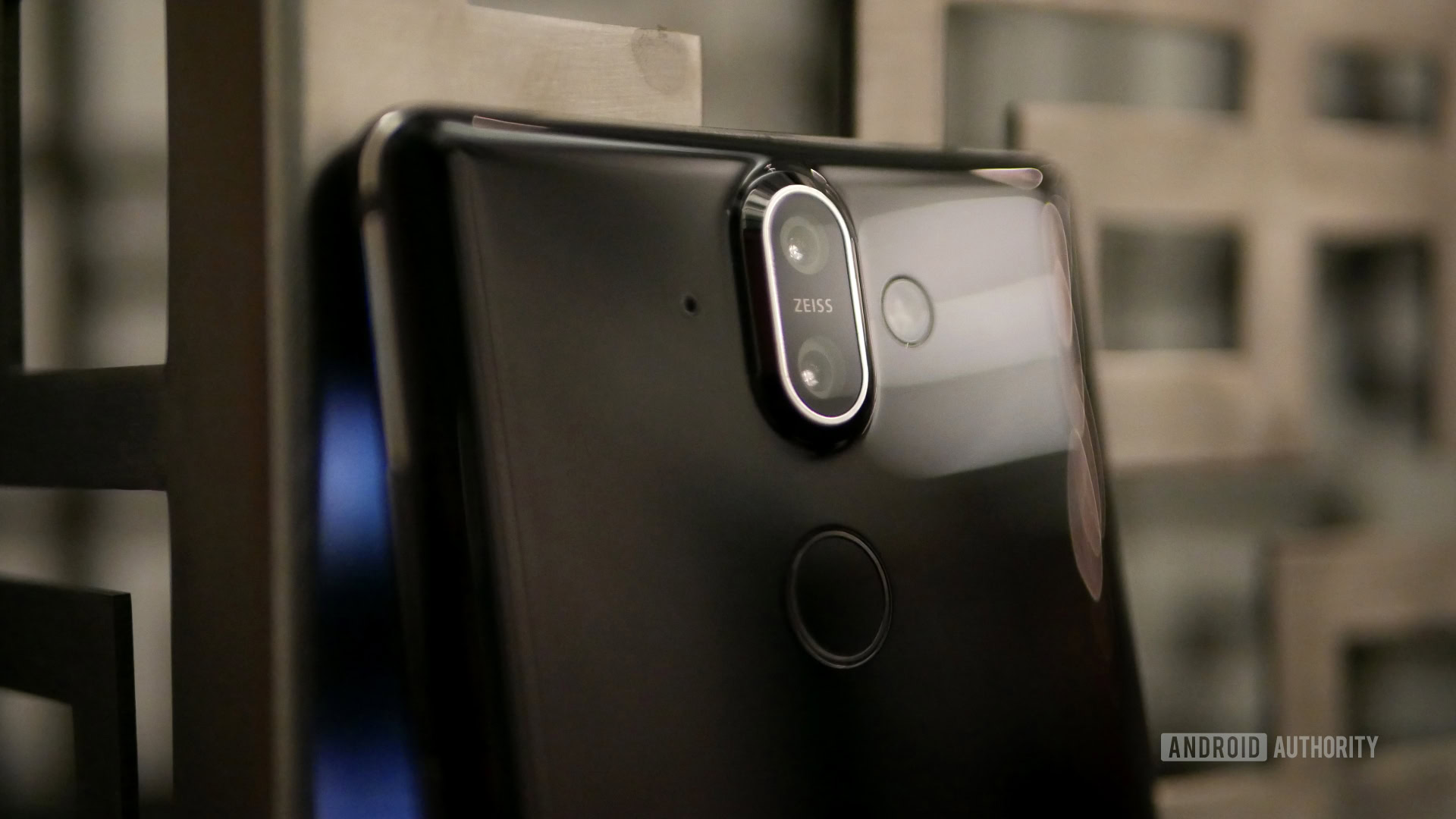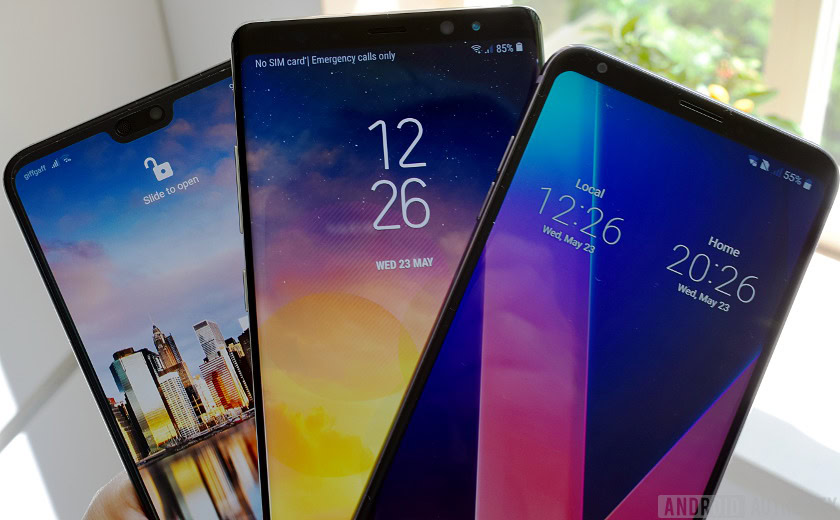Affiliate links on Android Authority may earn us a commission. Learn more.
Samsung Galaxy Note 9 vs the competition
Published onAugust 10, 2018

The Galaxy Note series represents the latest and greatest technology that Samsung has to offer and the new Samsung Galaxy Note 9 is no different. Power users looking for a supersized handset that can keep up will certainly have their eye on the Note 9. But the phone is not without some viable competition this year.
In global markets, the HUAWEI P20 Pro sets a high bar for style and substance in premium 6-inch form factor, particularly in the photography space. In the US, the LG V30 / V35 ThinQ are the most likely mainstream competitors at this size, while Oppo’s latest Find X showcases some of the really cutting-edge features that can fit into a flagship phablet.
So how does Samsung’s latest flagship compare? This is the Samsung Galaxy Note 9 vs the competition.
Power-user grade hardware
If you’re after a large phone, a top quality display is more important than ever and Samsung’s AMOLED technology delivers once again with the Galaxy Note 9. OLED technology is very common in the phablet tier though, will all of our comparison devices featuring either AMOLED or POLED technologies.
Samsung is at the top of the spec table with a QHD+ 2,960 x 1,440 resolution and, importantly for some, no notch. The LG V30, Google Pixel 2, and other models, match this resolution. In contrast, Chinese manufacturers like HUAWEI and OPPO seem to have settled on a FullHD+ resolution like 2,240 x 1080 for a better balance of battery life versus sharpness. Samsung doesn’t appear to disagree with this assessment, as the Galaxy Note 9 defaults to an FHD+ resolution too. You’ll have to manually go into the settings to switch to QHD+, although you shouldn’t expect a night and day difference.
| Samsung Galaxy Note 9 | HUAWEI P20 Pro | OPPO Find X | LG V30 / V35 ThinQ | Google Pixel 2 XL | |
|---|---|---|---|---|---|
Display | Samsung Galaxy Note 9 6.4-inch AMOLED panel 2,960 x 1,440 resolution 18.5:9 aspect ratio (FHD+ default resolution) | HUAWEI P20 Pro 6.1-inch AMOLED panel 2,240 x 1,080 resolution 18.7:9 aspect ratio | OPPO Find X 6.42-inch AMOLED panel 2,340 x 1,080 resolution 19.5:9 aspect ratio | LG V30 / V35 ThinQ 6.0-inch QuadHD+ P-OLED FullVision 2,880 x 1,440 resolution 538 ppi Corning Gorilla Glass 5 18:9 aspect ratio | Google Pixel 2 XL 6.0-inch Quad HD+ pOLED 2,880 x 1,440 resolution Corning Gorilla Glass 5 18:9 aspect ratio |
CPU | Samsung Galaxy Note 9 Exynos 9810 / Snapdragon 845 Octa-core up to 2.8GHz | HUAWEI P20 Pro HiSilicon Kirin 970 Octa-core up to 2.4GHz | OPPO Find X Qualcomm Snapdragon 845 Octa-core up to 2.8 GHz | LG V30 / V35 ThinQ Qualcomm Snapdragon 835 / Qualcomm Snapdragon 845 Octa-core up to 2.45GHz / 2.8 GHz | Google Pixel 2 XL Qualcomm Snapdragon 835 Octa-core up to 2.45GHz |
GPU | Samsung Galaxy Note 9 Mali-G72 MP18 / Adreno 630 | HUAWEI P20 Pro Mali-G72 MP12 | OPPO Find X Adreno 630 | LG V30 / V35 ThinQ Adreno 540 / Adreno 630 | Google Pixel 2 XL Adreno 540 |
RAM | Samsung Galaxy Note 9 6/8GB | HUAWEI P20 Pro 6GB | OPPO Find X 8GB | LG V30 / V35 ThinQ 4/6GB | Google Pixel 2 XL 4GB |
Memory | Samsung Galaxy Note 9 128/512GB | HUAWEI P20 Pro 128GB | OPPO Find X 256GB | LG V30 / V35 ThinQ 64/128GB | Google Pixel 2 XL 64/128GB |
MicroSD | Samsung Galaxy Note 9 Yes, up to 512GB | HUAWEI P20 Pro No | OPPO Find X No | LG V30 / V35 ThinQ Yes, up to 512GB | Google Pixel 2 XL No |
Battery | Samsung Galaxy Note 9 4,000mAh Non-removable | HUAWEI P20 Pro 4,000mAh Non-removable | OPPO Find X 3,730mAh Non-removable | LG V30 / V35 ThinQ 3,300mAh Non-removable | Google Pixel 2 XL 3,520 mAh Non-removable |
Samsung doesn’t like to divulge much about processor specs, owing to its dual release system, but we can deduce that the high-end Exynos 9810 and Snapdragon 845 from the Galaxy S9 remains in place here. This makes the Note 9 one of the highest performers along with the OPPO Find X and LG V35, edging out the HiSilicon Kirin 970 inside the HUAWEI P20 Pro. The older and slightly slower Snapdragon 835 is prevalent among phablet handsets that are due for an imminent refresh, such as the Pixel 2 and LG V30. Expect the performance playing field to level in the new few months.
The Note 9's 512GB storage blows the competition out of the water. But be prepared to pay for it.
The Galaxy Note 9 does go further than any of its competitors in the memory space though. There are generous 6 and 8GB RAM options, but it’s the 512MB internal storage configuration that really sets it apart from the competition. Most rivals tap out at 128GB and the Find X’s 258GB capacity is the closest rival. The Note 9 and LG V30 are one of the few to boast microSD card slots too, making them superior options for those with large portable media collections.
Finally, we come to the battery and again the Galaxy Note 9 leads the pack, along with the HUAWEI P20 Pro. Both feature gargantuan 4,000mAh batteries that make the LG V30’s 3,000mAh cell look puny by comparison. All these big phones pack in plenty of battery life, but its HUAWEI and Samsung who are able to extend a single charge into a second day of use.

Photography and extras
2018 has been a breakout year for camera technology. Competitors rose to match the excellent Pixel 2’s HDR+ camera technology and the HUAWEI P20 Pro broke the mold with its triple camera setup.

The Galaxy Note 9’s camera appears identical to the S9 Plus. There’s a telephoto lens for 2x optical zoom shots and a wide angle main sensor with a switchable aperture for better low light pictures. At 12 megapixels each, Samsung is focusing on larger pixel sizes over resolution for top quality snaps.
Camera capabilities remain one of the biggest handset differentiators.
The HUAWEI P20 Pro’s 40MP pixel binning technology offers a different approach to low light photography, combined with a 20MP monochrome sensor for additional detail and dynamic range. The P20 Pro also offers the most flexible zoom capabilities, with the option to crop down the huge 40MP photos, shoot with the 3x optical zoom telephoto lens, and extend the range further with its 5x Hybrid Zoom technology. The P20 Pro is complicated, but definitely the most flexible shooter for adventurous photographers.
The camera inside the OPPO Find X performs very well but is certainly less inspiring when it comes to flexibility. The pop-up space saving mechanism is a bigger eye catcher than its pictures, not unlike the vivo Nex. The LG V30 is a more flexible shooter with its secondary wide-angle camera, but it’s just not the most exciting option out there anymore. For what it’s worth, AI scene detection is available across the V30, V35, P20 Pro, and now in the Galaxy Note 9 too.
| Samsung Galaxy Note 9 | HUAWEI P20 Pro | OPPO Find X | LG V30 / V35 ThinQ | Google Pixel 2 XL | |
|---|---|---|---|---|---|
Camera | Samsung Galaxy Note 9 Rear: 12MP Wide Angle dual lens with f/1.5 and f/2.4 apertures, & OIS + 12MP telephoto with f/2.4 aperture, OIS, & 2x optical zoom Front: 8MP sensor with f/1.7 aperture | HUAWEI P20 Pro Rear: 40MP RGB sensor f/1.8 + 20MP monochrome f/1.6 + 8MP telephoto f/2.4 with OIS, Laser, Depth auto focus, 3X optical zoom, 5X Hybrid Zoom Front: 24MP sensor with an f/2.0 aperture | OPPO Find X Rear: 16MP with f/2.0 aperture & OIS + 20MP with f/2.2 aperture Front: 25MP with f/2.0 aperture | LG V30 / V35 ThinQ Rear: 16 MP Standard Angle sensor with ƒ/1.6 aperture, laser detection autofocus, OIS + 13 MP Wide Angle sensor with ƒ/1.9 aperture Front: 5 or 8 MP Wide Angle sensor with ƒ/1.9 aperture | Google Pixel 2 XL Rear: 12.2 MP sensor with f/1.8 aperture, laser autofocus, OIS & EIS Front: 8 MP sensor with f/2.4 aperture, fixed focus |
IP Rating | Samsung Galaxy Note 9 IP68 | HUAWEI P20 Pro IP67 | OPPO Find X No | LG V30 / V35 ThinQ IP68 MIL-STD 810G | Google Pixel 2 XL IP67 |
Audio | Samsung Galaxy Note 9 Bottom-firing speaker 3.5mm audio jack aptx & LDAC Bluetooth | HUAWEI P20 Pro Bottom-firing speaker No 3.5mm audio jack aptx HD, HWA, & LDAC Bluetooth | OPPO Find X Bottom-firing speaker No 3.5mm audio jack aptx HD & LDAC Bluetooth | LG V30 / V35 ThinQ Bottom-firing speaker 3.5mm audio jack aptx HD & LDAC Bluetooth | Google Pixel 2 XL Bottom-firing speaker No 3.5mm audio jack aptx HD & LDAC Bluetooth |
Charging | Samsung Galaxy Note 9 Adaptive Charging (Quick Charge 2.0, 18W) USB Type-C | HUAWEI P20 Pro SuperCharge (25W) USB Type-C | OPPO Find X Super VOOC Flash Charge (50W) USB Type-C | LG V30 / V35 ThinQ Qualcomm Quick Charge 3.0 (18W) USB Type-C | Google Pixel 2 XL Rapid Charging (18W) USB Type-C |
Software | Samsung Galaxy Note 9 Android 8.1 Oreo | HUAWEI P20 Pro Android 8.1 Oreo | OPPO Find X Android 8.1 Oreo | LG V30 / V35 ThinQ Android 7.1.1 Nougat Android 8.0 Oreo | Google Pixel 2 XL Android 8.0 Oreo (9.0 Pie upgrade) |
Other Features | Samsung Galaxy Note 9 S Pen, wireless charging, camera Scene Optimizer, Samsung Dex, NFC, Samsung Pay, BT 5.0 | HUAWEI P20 Pro Camera pixel binning, AI camera, EMUI Desktop, NFC, BT 4.2 | OPPO Find X 3D facial recognition, pop-up camera, NFC, BT 5.0 | LG V30 / V35 ThinQ AI camera, 32-bit audio DAC, BT 5.0 | Google Pixel 2 XL HDR+ camera, NFC, BT 5.0 |
The Galaxy Note series has always packed in tons of extras and its latest phone is no exception. You’ll find a full IP68 rating for water and dust resistance that’s par for the course these days, although the Find X misses out. The same applies to Bluetooth 5.0 support, with the notable exception of the HUAWEI P20 Pro. The latest Note still has a 3.5mm headphone jack, which again the same cannot be said about the P20, nor the OPPO Find X or Google Pixel 2 XL. Wired headphone enthusiasts will still likely want to pick between the Note 9 or LG V30. Although the prevalence of aptX HD and LDAC Bluetooth support makes this less of an issue if you’ve gone wireless.
Those who swear by Samsung Pay will undoubtedly want to stick with Samsung’s proprietary technology too. Although NFC for mobile payments is a staple in all high-end smartphones these days. The phone is also one of only a very small number equipped with wireless charging out of out the box. We can’t say that Bixby 2.0 will inspire the same level of devotion, as many assistant users will probably be happier with Google Assistant, a staple across all of these phones.
Fans of the S Pen and wireless charging will still find it tough to switch to a competitor.
It may be more of a niche feature, but those that want to dip into desktop mode to get some work done will have to opt for either HUAWEI’s EMUI Desktop or Samsung Dex. Dex now works with a simple HDMI cable accessory and the phone keeps working while running in desktop mode, making it very much like EMUI Desktop. Of course, the S Pen is also a nifty feature for jotting down notes and make use of Air Gestures.
The Galaxy Note 9 isn’t ahead everywhere though. Samsung’s Adaptive FastCharge technology is still based on the older Quick Charge 2.0 standard, making it slower than a number of its competitors. OPPO’s Super VOOC charging is insanely fast, pumping up to 50W of juice into your phone. The big battery should easily power you through a day, but other phones will be faster if you require a quick top up.

Galaxy Note 9 vs winner?
The Samsung Galaxy Note 9 definitely isn’t a major overhaul from the Note 8 and you could arguably have already bought a very similar phone in the S9 Plus. However, Samsung continues to do everything exceptionally well and the Note 9 is packed full of the best features around. The smartphone is a superb all-rounder, but there are a few exceptions where you may want to look at the competition.
Users who crave the latest software will always feel more at home with Google Pixel devices, which are already running Android 9.0 Pie rather than 8.0 Oreo. Who knows when Pie will land for Galaxy phones? The most demanding photographers may also want to give the HUAWEI P20 Pro’s impressive setup a whirl, while those after a phone that feels a bit more out-there and futuristic will have more fun with the head-turning OPPO Find X or vivo Nex.
Samsung’s formula is ultimately tough to beat, and there aren’t many reasons to turn it down when comparing the Galaxy Note 9 vs the competition. Which phone has you most excited? Let us know down in the comments.
More Samsung Galaxy Note 9 coverage
We have more Note 9 stories for you to check out:
- Samsung Galaxy Note 9 hands-on: Find out how the new Note feels and works
- Samsung Galaxy Note 9 price and availability: An up to date roundup of Note 9 availability information
- Samsung Galaxy Note 9 specs and features: Full Note 9 specs walkthrough